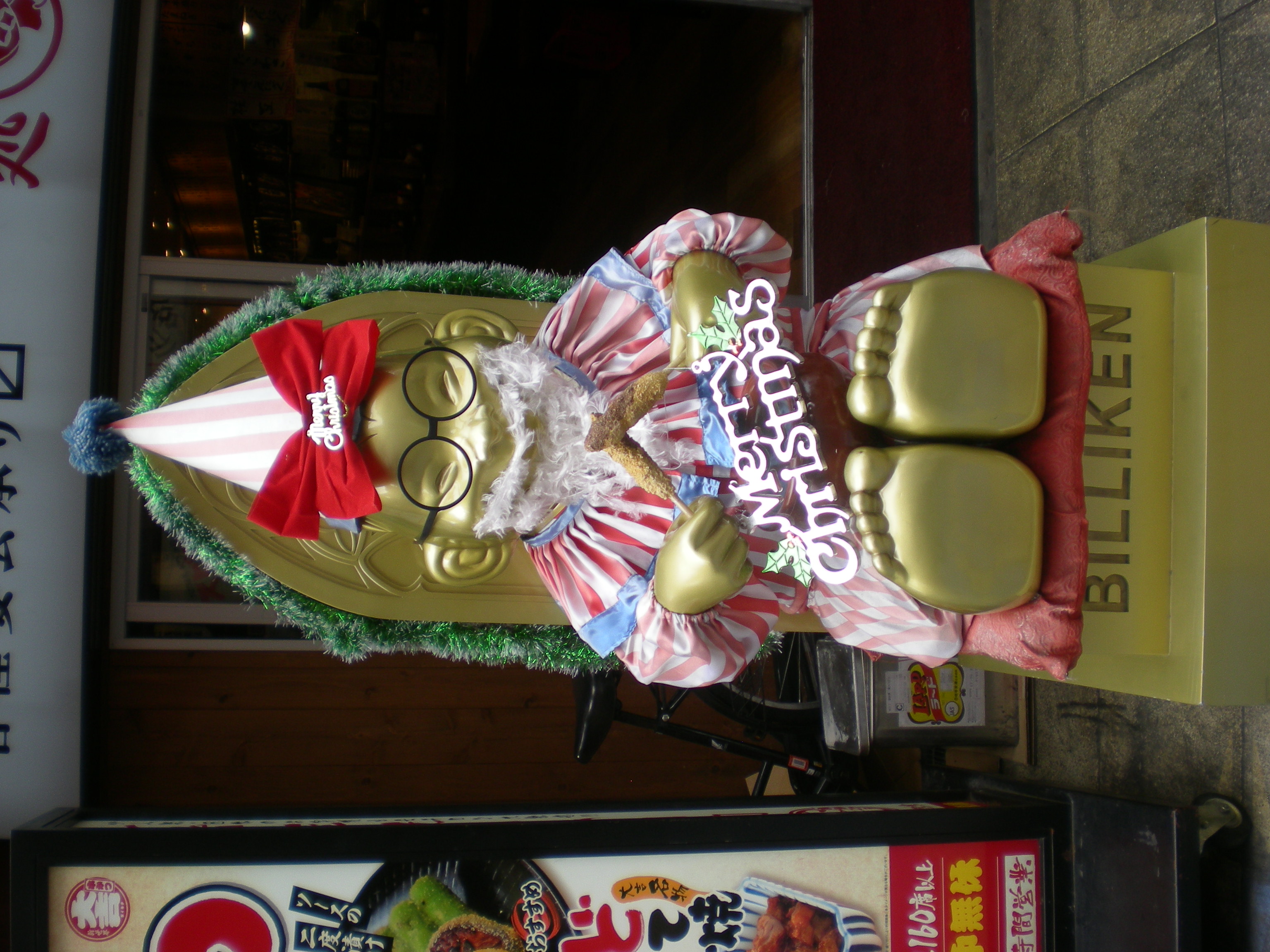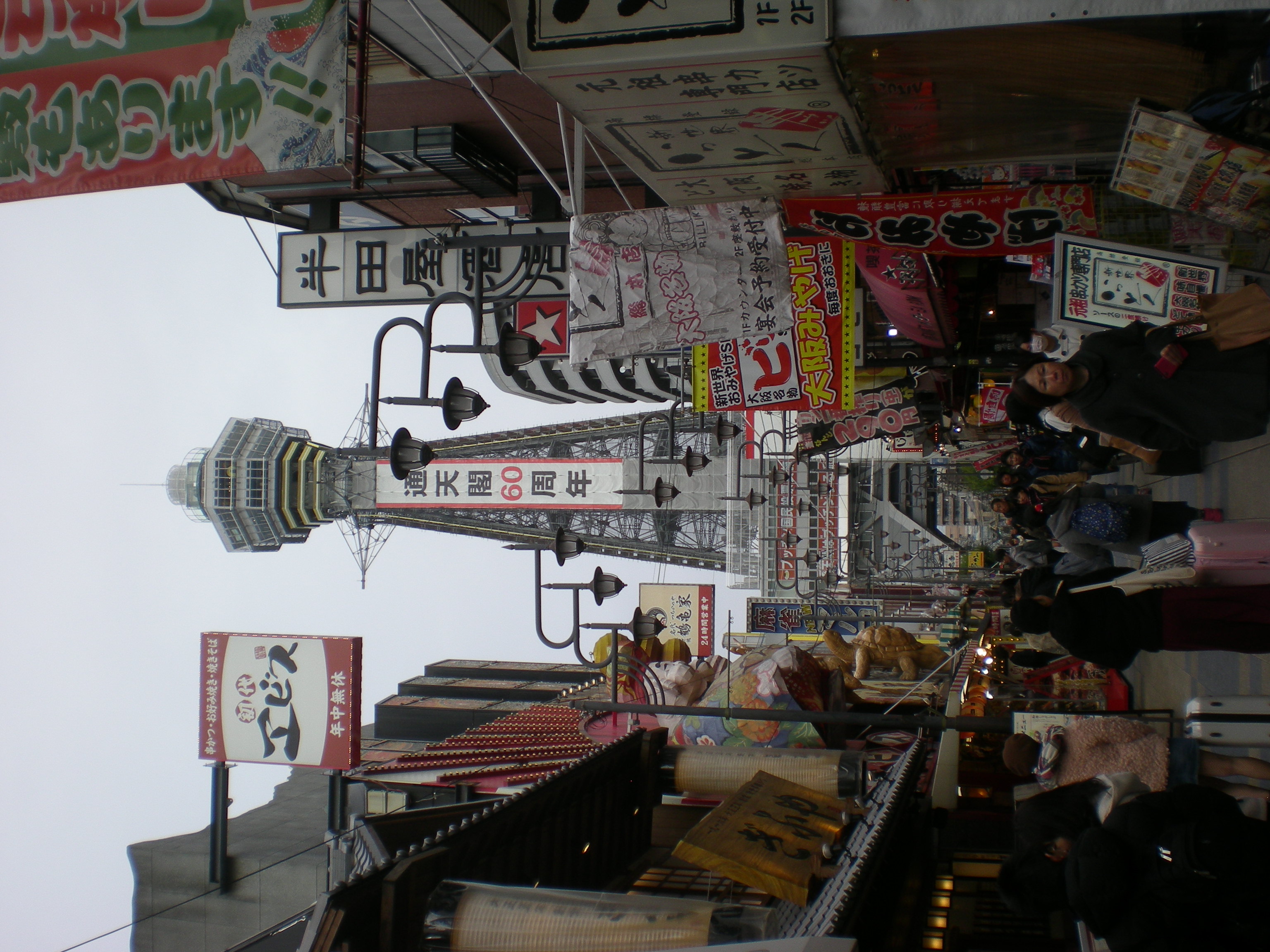At some point during their recent visit to Osaka, Yuriko and Ann made their way to the Tsūtenkaku, a tower rising above the Shinsekai neighborhood.
I hadn’t thought about the tower in years. I visited it very early during my time in Osaka. The present tower dates from 1956, probably counting as part of the postwar reconstruction. An earlier tower, built in 1912 and which supposedly took inspiration from the Eiffel Tower, stood until a wartime need for steel spelled its end in 1943.
I didn’t know, or had forgotten, that the current structure is the work of one Tachu Naito (1886-1970), Japan’s “Father of Towers.” He had a talent for designing towers that can withstand earthquakes, so he did a fair number of them.
Tsūtenkaku — fancifully translated as “tower reaching toward heaven” — has a mascot, Billiken. The same charm doll that’s the mascot of Saint Louis University, it seems, a creation and fad item of the very early 20th century in the United States.
How exactly Billiken made the transition to Japan isn’t clear to me, and I refuse to go down the rabbit hole looking for the story right now. Wiki says, without a footnote: “The Billiken made its Japanese debut in 1908. A statue was installed in the uppermost level of the original Tsutenkaku Tower as it was opened to the public in 1912. When the nearby Luna Park was closed in 1925, the tower’s Billiken statue disappeared. In 1980, a replacement statue made its appearance in a new Tsutenkaku Tower that was built in 1956.”
He comes in a number of guises near the tower, too.

 I can see the appeal, actually. He looks like something that the Japanese would have created. They didn’t happen to, but no matter. He fits right in. The real question is why is he associated with the tower?
I can see the appeal, actually. He looks like something that the Japanese would have created. They didn’t happen to, but no matter. He fits right in. The real question is why is he associated with the tower?
Speaking of Billiken, if you listen to the “Billiken Rag,” you might be the only person you know ever to have hear it.
